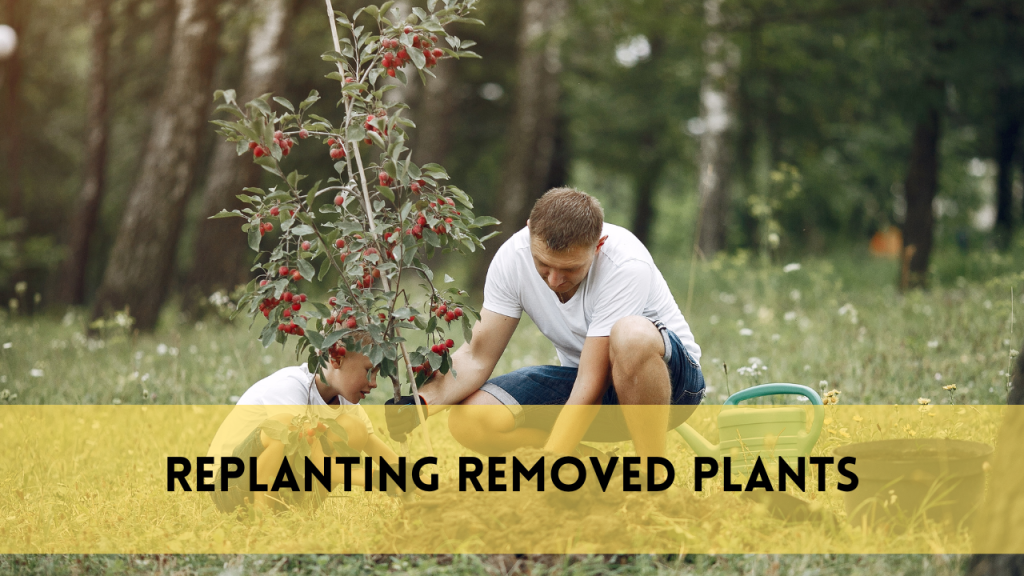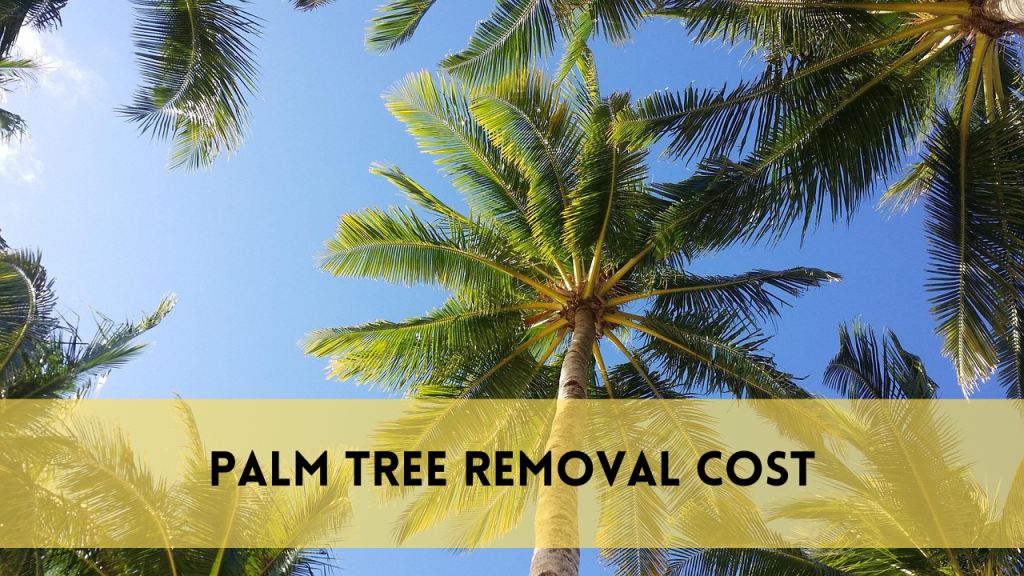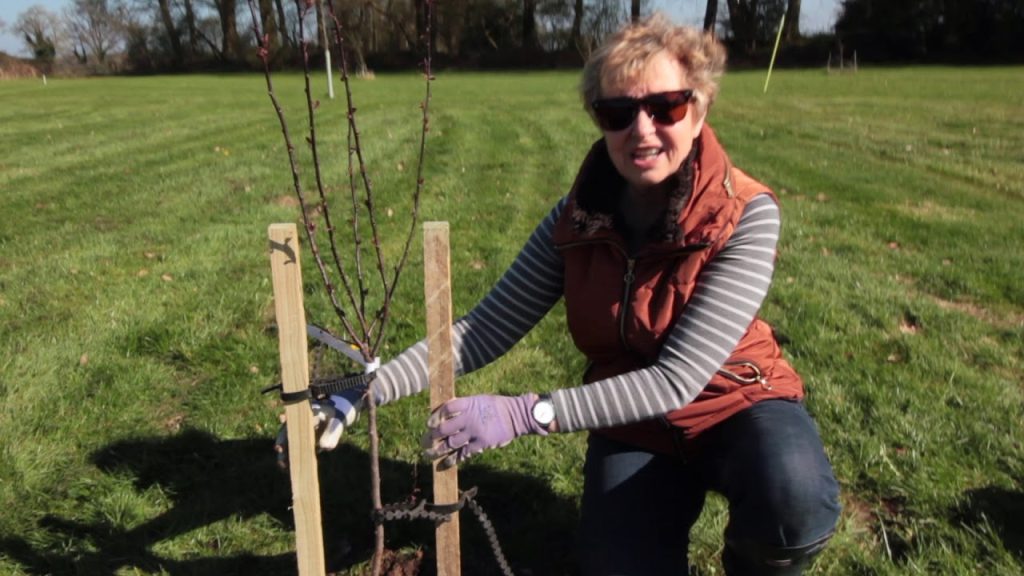Palm trees are iconic symbols of tropical beauty, but there are times when you may find yourself needing to remove their roots. Whether you’re dealing with a dead or unwanted palm tree or need to clear space for a new project, understanding how to remove palm tree roots is essential. This comprehensive guide will walk you through the entire process, from assessing the situation to post-removal care, ensuring that you can tackle this task with confidence.
The Significance of Removing Palm Tree Roots
Palm tree roots may not seem like a cause for concern at first, given their slender appearance compared to the towering beauty of the tree itself. However, they can be surprisingly resilient and invasive, potentially causing a range of problems:
Structural Damage: As palm tree roots grow, they can infiltrate foundations, sidewalks, driveways, and even sewer lines, leading to costly repairs and safety hazards.
Aesthetic Concerns: Dead or unsightly palm trees and their roots can detract from your property’s overall appearance and curb appeal.
Landscaping Plans: When you’re planning new landscaping or construction projects, removing palm tree roots may be necessary to clear the space and ensure the proper growth of other plants.
Overview of the Removal Process
This guide will provide you with detailed instructions on how to remove palm tree roots safely and effectively. It covers various aspects of the process, such as assessing the situation, preparation, the step-by-step removal process, safety considerations, post-removal care, and alternative solutions. By the end of this guide, you’ll have the knowledge and confidence to tackle palm tree root removal while minimizing potential risks and damage.
Potential Challenges and Safety Precautions
Before you embark on the journey of palm tree root removal, it’s essential to be aware of the challenges you might face and the safety precautions you should take. Some key considerations include:
Size and Depth: Palm tree roots can extend quite deeply and be challenging to remove entirely, depending on their size and age.
Proximity to Structures: Roots close to buildings or utilities may require more delicate removal techniques to prevent damage.
Safety Gear: Always wear appropriate safety gear, including gloves, goggles, and ear protection, when working with tools and machinery.
Environmental Impact: Consider the potential environmental impact and use of herbicides sparingly and responsibly.
Professional Help: For particularly large or complex palm tree root removals, it may be advisable to seek assistance from a professional tree removal service.
Assessing the Situation
Before you begin the process of removing palm tree roots, it’s crucial to assess the situation thoroughly. This assessment will help you plan your approach and ensure that the root removal process is carried out safely and effectively. Here are the key steps for assessing the situation:
Determining the Size and Depth of the Palm Tree Roots
Root Depth: Start by digging around the base of the palm tree to uncover the roots. Note how deep they go into the soil. This information will be vital in choosing the right tools and techniques for removal.
Root Spread: Assess the horizontal spread of the roots. Palm tree roots can extend several feet from the trunk, so understanding their reach will help you plan the excavation area.
Root Density: Pay attention to how densely the roots are packed. Dense root systems may require more effort to remove.
Identifying the Proximity of Roots to Structures or Utilities
Nearby Structures: Check if there are any buildings, foundations, walls, or other structures in close proximity to the palm tree roots. This is crucial information to prevent accidental damage during the removal process.
Utility Lines: Determine if there are underground utilities, such as water pipes, gas lines, or electrical cables, near the root zone. Hitting these utilities can be dangerous and expensive.
Assessing the Health and Condition of the Palm Tree
Is the Tree Alive or Dead: Determine whether the palm tree is still alive or already dead. Dead trees may have weaker, more brittle roots, making removal somewhat easier.
Disease or Pest Issues: Check for signs of disease or pest infestations. Diseased or infested trees may have weakened roots and may pose a health risk to other plants if not removed promptly.
Structural Integrity: Inspect the overall structural integrity of the tree. If the tree is leaning or has structural issues, it may be more prone to falling during the removal process, requiring additional precautions.
By thoroughly assessing the situation, you’ll be better prepared to make informed decisions about how to proceed with palm tree root removal. This initial step will also help you select the appropriate tools and techniques, as well as ensure the safety of nearby structures and utilities.
Preparing for Palm Tree Root Removal
Before you delve into the process of removing palm tree roots, it’s essential to make thorough preparations. Proper preparation not only ensures the safety of the removal process but also contributes to its overall effectiveness. Here’s what you need to do:
Gathering Necessary Tools and Equipment
Shovels: Invest in high-quality shovels, including a round-point shovel and a square-point shovel. These will be your primary tools for excavating around the roots.
Ax or Chainsaw: Depending on the size and thickness of the roots, you may need an ax or chainsaw to cut through them effectively.
Safety Gear: Prioritize your safety with the following gear:
Gloves: Protect your hands from blisters and sharp objects.
Goggles: Shield your eyes from debris, dirt, and flying wood chips.
Ear Protection: If you’ll be using a chainsaw or other loud equipment, ear protection is crucial to prevent hearing damage.
Rope or Cable: You may need a rope or cable to stabilize the palm tree during the removal process, especially if there’s a risk of it falling in an undesired direction.
Herbicide (Optional): If you plan to use herbicide to control root regrowth, make sure you have the appropriate herbicide and application equipment.
Obtaining Any Required Permits or Permissions
Depending on your location and local regulations, you may need permits or permissions to remove a palm tree and its roots. Research your local ordinances and contact your municipal or county authorities to determine if any permits are necessary. Failing to obtain the required permits can result in legal issues and fines.
Planning Your Approach
Safety First: Before starting any work, establish a safety plan. Identify escape routes, ensure clear communication with any helpers, and have a first aid kit on hand.
Clear the Work Area: Remove any obstacles or debris from the work area to prevent accidents and make it easier to maneuver equipment and tools.
Establish a Debris Disposal Plan: Decide how you will dispose of the removed roots and tree debris. Options may include mulching, composting, or arranging for a bulk waste pickup service.
Consider Environmental Impact: If you’re using herbicide, carefully read and follow the manufacturer’s instructions. Use it sparingly and responsibly to minimize environmental impact.
Proper preparation is the foundation of a successful palm tree root removal project. By acquiring the right tools, ensuring your safety, obtaining necessary permits, and planning your approach, you’ll be well-prepared to proceed with the removal process effectively and safely.
The Removal Process
Removing palm tree roots is a methodical process that requires careful planning and execution. In this section, we’ll provide you with step-by-step instructions on how to remove palm tree roots effectively. Follow these guidelines to ensure a successful removal:
Step-by-Step Instructions for Palm Tree Root Removal
Pruning the Palm Tree (if necessary): Before tackling the roots, assess the condition of the palm tree itself. If the tree is still alive but needs removal, consider pruning it to reduce its size. This step can make the removal of roots easier and safer.
Excavating the Soil Around the Roots:
- Begin by digging a trench around the base of the palm tree, following the estimated spread of the roots.
- Gradually deepen the trench to expose the roots. Take care not to damage the roots as you dig.
- Cutting the Roots Strategically:
- Using an ax or chainsaw, carefully cut through the exposed roots one by one. Start with smaller roots and work your way up to larger ones.
- When cutting large roots, it’s often easier to make several cuts from different angles rather than trying to cut through them in one pass.
Leveraging Mechanical Assistance (if applicable):
For exceptionally large or stubborn roots, consider using mechanical assistance, such as a stump grinder or an excavator with a root-cutting attachment.
Follow all safety precautions when using heavy machinery and ensure you have the necessary skills or hire a professional if needed.
Removing the Stump:
After cutting the majority of the roots, you can attempt to remove the palm tree stump. This may involve using a combination of digging, rocking the stump, and cutting remaining connections to the roots.
Dealing with Large or Stubborn Roots
Removing large or stubborn palm tree roots can be particularly challenging. Here are some strategies:
Gradual Removal: If a large root is difficult to cut through completely, you can gradually remove it over several weeks or months by cutting a section at a time.
Stump Grinders: Stump grinders are effective for grinding down large roots and stumps. They can make the process quicker and less physically demanding.
Professional Help: For extremely large or complex root removals, it’s advisable to consult with a professional tree removal service with experience in palm tree root removal.
Using Herbicide for Root Control (if desired)
If you want to prevent regrowth of palm tree roots, you can use an appropriate herbicide. Follow these steps if you choose to use herbicide:
Select the Right Herbicide: Choose an herbicide specifically designed for controlling woody plants and tree roots.
Apply the Herbicide: Apply the herbicide according to the manufacturer’s instructions. Typically, this involves making cuts into the exposed roots and applying the herbicide directly to the cut surfaces.
Monitor and Repeat: Monitor the treated area for signs of regrowth, and be prepared to reapply the herbicide as needed.
Proper Disposal of Removed Roots and Tree Debris
Dispose of the removed palm tree roots and debris responsibly. Options for disposal include:
Mulching: If the roots and debris are small enough, you can run them through a chipper or shredder to create mulch for your garden.
Composting: Larger debris can be added to a compost pile, but it may take longer to decompose.
Bulk Waste Pickup: Contact your local waste management or recycling center to inquire about bulk waste pickup services or drop-off locations.
Proper disposal ensures that the removed material doesn’t become a nuisance or environmental hazard.
Safety Considerations
Safety should always be your top priority when removing palm tree roots. The process can involve heavy tools and potential hazards, so taking precautions is essential to prevent accidents and injuries. Here are important safety considerations to keep in mind:
Protecting Yourself During the Removal Process
Safety Gear: Always wear the appropriate safety gear, including:
- Gloves: Protect your hands from blisters, cuts, and splinters.
- Goggles: Shield your eyes from flying debris, dirt, and wood chips.
- Ear Protection: If you’re using loud equipment like a chainsaw, wear ear protection to prevent hearing damage.
- Sturdy Work Boots: Ensure you have footwear with good traction and ankle support.
- Clothing: Wear long sleeves and pants to protect your arms and legs from scratches and irritants like palm tree fibers.
- Stay Hydrated: Working in the heat can lead to dehydration. Drink plenty of water to stay hydrated throughout the process.
- Take Breaks: Avoid overexertion by taking regular breaks to rest and rehydrate.
- Proper Lifting Techniques: When lifting heavy roots or equipment, use proper lifting techniques to avoid back injuries. Bend your knees, keep your back straight, and lift with your legs.
- Teamwork: If possible, work with a partner who can assist with heavy lifting and provide support in case of emergencies.
Tips for Working with Power Tools Safely
Chainsaw Safety: If using a chainsaw, follow these guidelines:
- Ensure the chainsaw is in good working condition.
- Keep both hands on the saw at all times.
- Use the proper chain for cutting roots.
- Avoid kickback by keeping the chainsaw’s nose away from you.
- Stump Grinder Safety: If using a stump grinder or other heavy machinery:
- Read and follow the manufacturer’s safety instructions.
- Ensure you are properly trained to use the equipment.
- Keep a safe distance from moving parts.
- Gasoline-Powered Equipment: If using gasoline-powered equipment, store and handle fuel in a safe and well-ventilated area, away from open flames.
By prioritizing safety and taking the necessary precautions, you can significantly reduce the risks associated with palm tree root removal. Remember that when in doubt, it’s always wise to consult with a professional tree removal service, especially for complex or hazardous situations.
Post-Removal Care
Once you’ve successfully removed the palm tree roots, it’s important to take steps to care for your landscaping and prevent regrowth of the roots. Proper post-removal care will help ensure the health of your garden and prevent future issues. Here’s what you need to do:
Filling the Hole Left by Root Removal
- Fill the Trench: After root removal, you’ll be left with a trench or hole where the roots used to be. Fill this trench with soil that matches the surrounding area. Pack the soil down firmly to eliminate air pockets.
- Tamping: Use a tamper or a piece of lumber to compact the soil as you fill the trench. This helps prevent settling, which can create depressions in the ground.
- Watering: Water the filled trench thoroughly to settle the soil and encourage proper settling. Add more soil as needed to maintain a level surface.
Addressing Any Damage to the Surrounding Landscape
- Repair Landscaping: If the palm tree roots caused damage to nearby plants, grass, or landscaping features, take the necessary steps to repair or replace them.
- Soil Amendments: Consider adding soil amendments or organic matter to improve the overall quality of the soil in the area where the roots were removed. This can help promote healthy plant growth.
Ensuring the Health of Nearby Vegetation
- Monitor for Stress: Keep an eye on nearby plants for signs of stress or damage caused by the palm tree roots. Affected plants may show wilting, yellowing leaves, or reduced growth. Address any issues promptly.
- Provide Adequate Watering: Ensure that nearby plants receive adequate water after root removal, especially during dry periods. The removal of the palm tree roots can disrupt the soil’s moisture balance.
- Fertilization: Depending on your soil’s nutrient content, consider adding appropriate fertilizers to support the growth of nearby plants.
Related Posts:
Monitoring for Regrowth of Palm Tree Roots
- Palm trees are known for their resilience, and even after root removal, some regrowth may occur. Monitor the area for signs of regrowth, including new shoots or sprouts. If regrowth occurs, you have a few options:
- Regular Maintenance: Continuously prune any new growth as soon as it appears. This may require ongoing vigilance.
- Herbicide Application: If regrowth becomes a persistent issue, you can apply an appropriate herbicide according to the manufacturer’s instructions to control it.
- Consider a Root Barrier: Installing a root barrier, like a physical or chemical barrier, can help prevent future regrowth into the area you’ve cleared.
By taking these post-removal care steps, you can ensure the long-term health and aesthetics of your landscaping while minimizing the risk of palm tree root regrowth.
Conclusion
In conclusion, while root removal is a viable option in many cases, it’s not the only solution. Root barriers, professional assistance, and alternative landscaping choices can provide effective ways to address palm tree root issues while maintaining a healthy and attractive landscape. Carefully evaluate your specific situation and needs before deciding on the best course of action.



